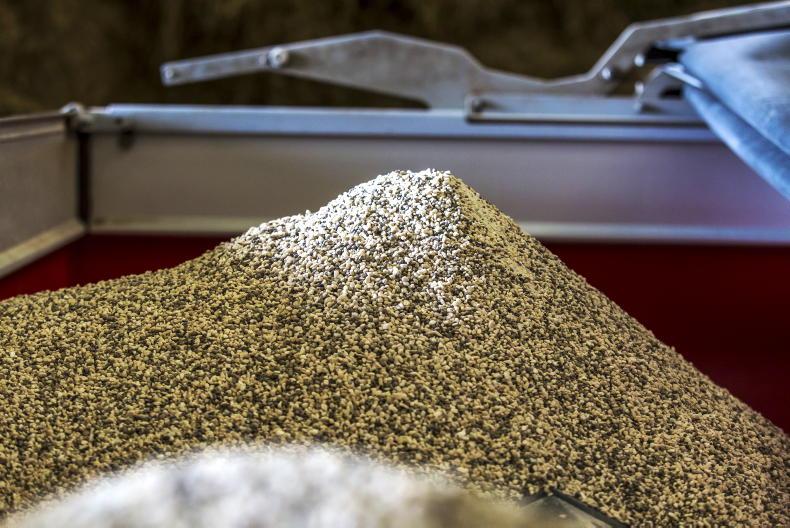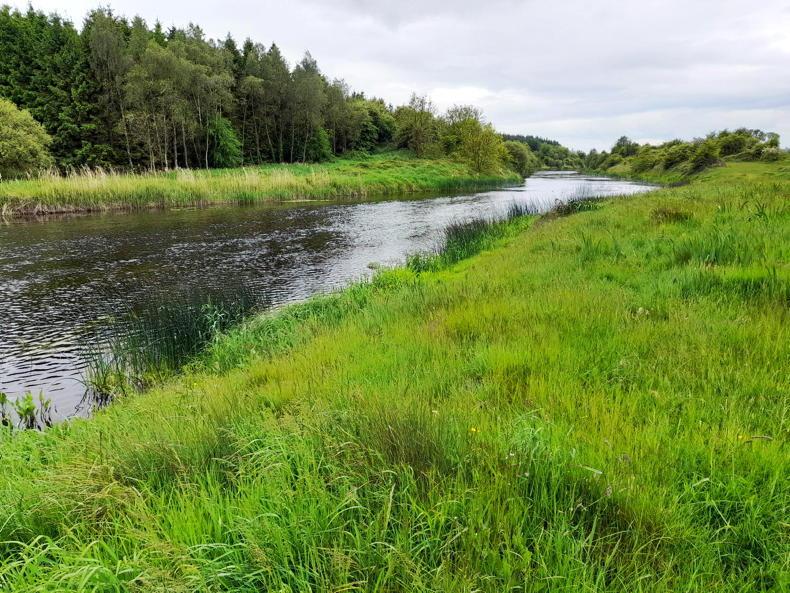Before you go out buying your fertiliser this spring, take the time to consider the following questions:
What nutrients (N, P, K, S, etc) are required on the farm as indicated by your nutrient management plan or soil test results? Is the traditional compound fertiliser that you used last year the correct one for your farm this season? Discuss this with your adviser or local agronomist.What is the most suitable fertiliser compound for different parts of the farm? There are a range of different fertiliser blends on the market with various amounts of N, P or K and S.Traditionally, when farmers were choosing a fertiliser product they made a relatively straightforward choice between an N-only product such as CAN (with or without S) or a compound fertiliser when P and K was required for grazing, eg N-P-K, 18-6-12 or 27-2.5-5; or for silage, eg 24-2.5-10. These four or five products would have met the fertiliser requirements for many farmers.
However, with factors and influences such as nutrient management planning, better understanding of soil fertility, higher levels of production and better yielding varieties leading to higher nutrient offtake and the need to be more environmentally sustainable, the list of fertiliser products required by farmers has expanded.
Farmers have never had so many fertiliser products to choose from. The typical maintenance nutrient requirement for grazed swards at 2LU/ha is 14kg/ha P and 30kg/ha K. This is a P-K ratio of 1:2, as a lot of nutrients are recycled back to the grassland soil by the grazing animal.
Maintenance fertiliser products suitable for grazing fields such as N-P-K 27-2.5-5 would be suitable. However, if P and K levels are low (Index 1 or 2) consider products such as N-P-K, 18-6-12 or 10-10-20, to build up soil fertility indices.
Care and consideration should be taken with K applications on the grazing platform, as excessive applications may cause magnesium levels in the grass to diminish, leading to grass tetany. The best advice to replenish large soil K requirements (K Index 1) is to use products such as muriate of potash (50% MOP) from late summer onwards. Where P and K levels are adequate, alternative straight N fertiliser choices, such as protected urea, are now widely available in the marketplace. Alternatively, you can use a protected urea N-K product such as 29-0-14+S where K is required. If P is required but not K, then use a product such as N-P: 25-4-0(+S).
Fertiliser choices for silage
Silage will remove a large amount of P and especially K from the soil. Traditionally, slurry and farmyard manure were reserved for the silage ground and helped to offset some of the fertiliser P and K requirements. However, we need to account for high grass silage yields (5t to 6t dry matter/ ha) and to assess the slurry N-P-K values depending on how diluted or thick the slurry is.
This will ensure that the correct fertiliser is selected to meet the full crop requirements, eg N-P-K, 13-6-20 or 14-7-14.
In the absence of slurry, use higher K fertiliser blends on silage fields and go back to top up your N requirement, eg use 10-5-25+S or 13-6-20 +S. You can top up your N requirement with straight CAN or CAN +S or protected urea + S.
Tillage farmers have led the change towards using different N-P-K compounds. Higher cereal yields and higher-yielding varieties, higher crop offtakes, low K status observed using extensive soil testing and better agronomic advice have driven this requirement for more specific fertilisers. This is especially true for compounds with high K, with demand increasing over recent seasons. To meet this demand, many compound fertilisers developed by Irish fertiliser blenders have evolved and contain over 50% K. Most of them have added sulphur.
Before you go out buying your fertiliser this spring, take the time to consider the following questions:
What nutrients (N, P, K, S, etc) are required on the farm as indicated by your nutrient management plan or soil test results? Is the traditional compound fertiliser that you used last year the correct one for your farm this season? Discuss this with your adviser or local agronomist.What is the most suitable fertiliser compound for different parts of the farm? There are a range of different fertiliser blends on the market with various amounts of N, P or K and S.Traditionally, when farmers were choosing a fertiliser product they made a relatively straightforward choice between an N-only product such as CAN (with or without S) or a compound fertiliser when P and K was required for grazing, eg N-P-K, 18-6-12 or 27-2.5-5; or for silage, eg 24-2.5-10. These four or five products would have met the fertiliser requirements for many farmers.
However, with factors and influences such as nutrient management planning, better understanding of soil fertility, higher levels of production and better yielding varieties leading to higher nutrient offtake and the need to be more environmentally sustainable, the list of fertiliser products required by farmers has expanded.
Farmers have never had so many fertiliser products to choose from. The typical maintenance nutrient requirement for grazed swards at 2LU/ha is 14kg/ha P and 30kg/ha K. This is a P-K ratio of 1:2, as a lot of nutrients are recycled back to the grassland soil by the grazing animal.
Maintenance fertiliser products suitable for grazing fields such as N-P-K 27-2.5-5 would be suitable. However, if P and K levels are low (Index 1 or 2) consider products such as N-P-K, 18-6-12 or 10-10-20, to build up soil fertility indices.
Care and consideration should be taken with K applications on the grazing platform, as excessive applications may cause magnesium levels in the grass to diminish, leading to grass tetany. The best advice to replenish large soil K requirements (K Index 1) is to use products such as muriate of potash (50% MOP) from late summer onwards. Where P and K levels are adequate, alternative straight N fertiliser choices, such as protected urea, are now widely available in the marketplace. Alternatively, you can use a protected urea N-K product such as 29-0-14+S where K is required. If P is required but not K, then use a product such as N-P: 25-4-0(+S).
Fertiliser choices for silage
Silage will remove a large amount of P and especially K from the soil. Traditionally, slurry and farmyard manure were reserved for the silage ground and helped to offset some of the fertiliser P and K requirements. However, we need to account for high grass silage yields (5t to 6t dry matter/ ha) and to assess the slurry N-P-K values depending on how diluted or thick the slurry is.
This will ensure that the correct fertiliser is selected to meet the full crop requirements, eg N-P-K, 13-6-20 or 14-7-14.
In the absence of slurry, use higher K fertiliser blends on silage fields and go back to top up your N requirement, eg use 10-5-25+S or 13-6-20 +S. You can top up your N requirement with straight CAN or CAN +S or protected urea + S.
Tillage farmers have led the change towards using different N-P-K compounds. Higher cereal yields and higher-yielding varieties, higher crop offtakes, low K status observed using extensive soil testing and better agronomic advice have driven this requirement for more specific fertilisers. This is especially true for compounds with high K, with demand increasing over recent seasons. To meet this demand, many compound fertilisers developed by Irish fertiliser blenders have evolved and contain over 50% K. Most of them have added sulphur.










SHARING OPTIONS